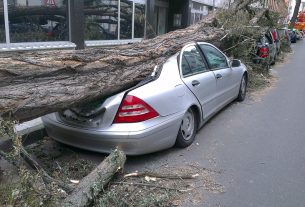This blog post on ‘Populations’ is part of the BES ‘Key Concepts in Ecology’ series, designed to help ecologists in learning the key topics in ecology! Take a look at the full series for a list of key topics you might typically find in an ecology textbook, each providing a quick introduction to the topic, and a list of suggested papers for students to refer to.
A population is a group of individuals of the same species that mate – and so must be distributed in the same area at the same time. The concept of populations, which originates from the study of human populations, has been a pillar of ecological research. This is because understanding the size of a population and the distribution of different populations across the range of potential habitats is fundamental to design conservation measures and management of species (Morris et al. 2021; Bird et al. 2021; Saunders et al. 2018).
So how do we estimate the distribution and size of a populations? The former can take make forms, even engaging volunteers or tourists to survey large areas (Self et al. 2021), and essentially consist of looking for the presence of any individual at a given site. But once presence is established, the trickier part is to count how many individuals there are, in other words estimating the population abundance or density. Many well-known abundance datasets, collected over several decades (e.g., Morris et al. 2021), have relied on repeated, systematic point surveys to count individuals. New technologies in both aquatic and terrestrial systems to passively trap or record individuals (e.g., Pritchard et al. 2021) are increasingly used to supplement such intensive point surveying, thus making abundance estimates possible over larger areas (Doser et al. 2021; Suryawanshi et al. 2021) or for elusive species (Stien et al. 2022).
Regardless of technology used, estimates of population distributions and abundances come with a lot of uncertainties: observer bias, false positives or false negatives in detection, cryptic, unobservable life cycle stages, you name it. All the different sources of uncertainty can hinder effective conservation measures (Bird et al. 2021). Not surprisingly, therefore, optimizing how individuals are surveyed in the field (Kays et al. 2020) to minimize uncertainties and developing statistical methods to account for the remaining sources of uncertainties (Saunders et al. 2018) has been essential to robustly estimate population parameters.
Once we quantify the variation in distribution and size of populations, the next question is necessarily: what are the drivers of such variation? Or, put in other words, what determines population growth? Most fundamentally, the size of a population at a given point in time depends on what size it was at a previous point in time, leading to exponential growth or decay (Lehman et al. 2020). However, no natural population can grow indefinitely and instead stabilizes as it approaches the limit that a given habitat can support, i.e., the carrying capacity, resulting in other forms of growth rates, most importantly the logistic (Lehman et al. 2020). Various mechanisms can underlie stabilization, and one of best described is self-regulation – proposed over 100 years ago using vole and lemming population cycles as an example. Here, individuals are negatively affected by high densities of conspecifics, resulting in intrinsic regulatory mechanisms “kicking in” to reduce population density (Edwards et al. 2021). Such mechanisms may include changes in behaviour or increased dispersal.
Dispersal grounds the concept of populations firmly in the spatial domain – emphasizing that population size doesn’t just vary in time. Dispersing individuals effectively connect several populations or colonize suitable habitat patches, thus joining populations into metapopulations (Hanski 1994; Thomas & Harrison 1992). As movement of individuals among populations is critical to counteract local extinctions (Raventos et al. 2021), designing effective corridors to facilitate dispersal has been become a cornerstone of conservation management (Dickie et al. 2019; Hornigold 2022) – in parallel to estimating distributions and population sizes. With advances in technologies that allow us to track dispersing individuals, research effort has focused on understanding how (Fieberg et al. 2021) and why (Morrison et al. 2021) individuals disperse to different habitats and how this affects local populations and communities (Lehikoinen et al. 2021).
Introduction written by Maria Paniw (Associate Editor, Journal of Applied Ecology). Reading list curated by the BES journal Editors.
References and suggested reading
Distribution and abundance
- Morris, C. D., Duck, C. D., Thompson, D. (2022), Aerial surveys of seals in Scotland during the harbour seal moult, 2016-2019, NatureScot, Research Report No. 1256.
- Self, H. et al. (2021), Tourism informing conservation: The distribution of four dolphin species varies with calf presence and increases their vulnerability to vessel traffic in the four-island region of Maui, Hawai‘i, Ecological Solutions and Evidence, 2: e12065.
Estimating abundance
- Bhatia, N., Franco, A. (2021), South Walney lagoons: Species composition monitoring: Final report, Natural England, Natural England Commissioned Report NECR398.
- Doser, J. W. et al. (2021), Integrating automated acoustic vocalization data and point count surveys for estimation of bird abundance, Methods in Ecology and Evolution, 12: 1040-1049.
- Stien, J. et al. (2022), Estimating abundance in unmarked populations of Golden Eagle (Aquila chrysaetos), Ecological Solutions and Evidence, 3: e12170.
- Pritchard, E, G. et al. (2021). The ‘Pritchard Trap’: A novel quantitative survey method for crayfish, Ecological Solutions and Evidence, 2: e12070.
- Bird, J. P. et al. (2021). Uncertainty in population estimates: A meta-analysis for petrels, Ecological Solutions and Evidence, 2: e12077.
- Suryawanshi, K. et al. (2021), Estimating snow leopard and prey populations at large spatial scales, Ecological Solutions and Evidence, 2: e12115.
Abundance, occupancy, range size, and body size relationships
Dispersal limitation and habitat corridors
- Fieberg, J. et al. (2021), A ‘How to’ guide for interpreting parameters in habitat-selection analyses, Journal of Animal Ecology, 90: 1027-1043.
- Dickie, M. et al. (2019), Corridors or risk? Movement along, and use of, linear features varies predictably among large mammal predator and prey species, Journal of Animal Ecology, 89: 623-634.
Population growth rate – exponential and logistic
Population dynamics over space and time
Small populations
Metapopulations
- Thomas, C. D., Harrison, S. (1992), Spatial Dynamics of a Patchily Distributed Butterfly Species, Journal of Animal Ecology, 61: 437-446.
- Arancibia, P. A., Morin, P. J. (2021), Network topology and patch connectivity affect dynamics in experimental and model metapopulations, Journal of Animal Ecology, 91: 496-505.


